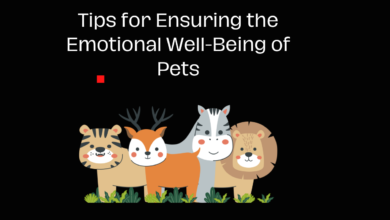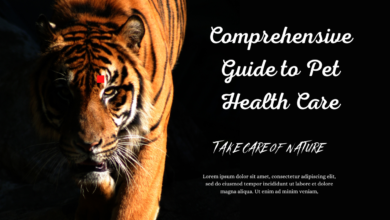
Grooming is an essential aspect of pet care that goes beyond maintaining a pet’s appearance. Regular grooming plays a critical role in keeping your pet clean, healthy, and comfortable. It helps prevent a variety of health issues, strengthens the bond between you and your pet, and contributes to their overall well-being.

This article delves into the numerous benefits of grooming, offering insights into why it should be an integral part of your pet care routine.
Understanding the Importance of Grooming
Grooming involves more than just brushing your pet’s fur; it encompasses a range of activities such as bathing, nail trimming, ear cleaning, and dental care. Each of these grooming practices contributes to your pet’s health and comfort in different ways.
- Skin and Coat Health: Regular brushing helps remove dirt, debris, and loose hair from your pet’s coat, reducing the risk of matting and tangling. It also stimulates the skin, promoting healthy oil production that keeps the coat shiny and soft.
- Prevention of Health Issues: Grooming helps in the early detection of skin problems, parasites, and other health issues. Regular checks during grooming sessions can help identify lumps, bumps, or unusual skin conditions that may require veterinary attention.
- Comfort and Hygiene: Pets with long or thick fur are prone to matting, which can cause discomfort, pain, and even skin infections. Regular grooming prevents matting and keeps your pet’s coat clean and manageable.
- Bonding Time: Grooming provides an opportunity for you to bond with your pet. The physical contact during grooming sessions can be soothing for your pet and help strengthen the emotional connection between you.
Benefits of Regular Grooming
Grooming offers a multitude of benefits for both pets and their owners. Here are some key advantages:
- Improved Skin Health: Grooming helps remove dead skin cells, dirt, and excess oils from your pet’s skin, reducing the risk of skin infections and irritations. Brushing also distributes natural oils across the coat, promoting a healthy shine and reducing dryness.
- Reduced Shedding: Regular brushing can significantly reduce shedding by removing loose fur before it falls off your pet and onto your furniture. This not only keeps your home cleaner but also prevents your pet from ingesting loose hair during grooming, which can lead to hairballs in cats and digestive issues in dogs.
- Prevention of Parasites: Grooming allows you to check for fleas, ticks, and other parasites that can cause discomfort and transmit diseases. Early detection and removal of these parasites can prevent infestations and protect your pet’s health.
- Enhanced Comfort: Pets with long fur or hair that grows continuously, like certain dog breeds, can experience discomfort if their coat becomes matted or tangled. Regular grooming helps keep their coat in good condition, preventing painful matting and ensuring your pet stays comfortable.
- Nail Health: Trimming your pet’s nails is crucial for their comfort and mobility. Overgrown nails can cause pain, difficulty walking, and even lead to joint issues. Regular nail trimming prevents these problems and keeps your pet’s paws healthy.
- Improved Oral Health: Dental care is an important aspect of grooming that is often overlooked. Regular brushing of your pet’s teeth helps prevent plaque buildup, gum disease, and bad breath. Good oral hygiene is essential for your pet’s overall health, as dental problems can lead to more serious health issues.
- Early Detection of Health Problems: Grooming sessions provide an opportunity to check your pet for any unusual lumps, bumps, or skin conditions. Early detection of health issues can lead to prompt treatment and prevent minor problems from becoming more serious.
:
- Stress Relief for Your Pet: Grooming can be a relaxing experience for pets, especially when done regularly. The gentle brushing, massaging, and attention from their owner can help reduce stress and anxiety. This is particularly important for pets that may experience stress from other aspects of their environment, such as loud noises or new experiences.
- Maintaining a Healthy Coat: Different breeds have different grooming needs, but all pets benefit from a healthy coat. Regular grooming ensures that your pet’s fur remains free of tangles and mats, which can cause discomfort and lead to skin problems. A well-maintained coat also helps regulate your pet’s body temperature, keeping them comfortable in various weather conditions.
- Improved Circulation: Brushing your pet’s fur not only keeps their coat in good condition but also improves blood circulation. The act of brushing stimulates blood flow to the skin, which can enhance overall skin health and promote a healthier, more vibrant coat.
- Socialization Benefits: For pets that are not naturally comfortable with being touched or handled, regular grooming can help them become more accustomed to human interaction. This can be especially beneficial for rescue pets or animals that have had limited socialization. Grooming helps build trust and can make future handling by veterinarians or groomers less stressful.
- Odor Control: Regular grooming helps keep your pet smelling fresh. Bathing, in particular, removes dirt, oils, and odors that can accumulate over time. Maintaining a clean coat also reduces the likelihood of unpleasant pet odors in your home.
Grooming Tips for Pet Owners
To maximize the benefits of grooming, it’s important to tailor the grooming routine to your pet’s specific needs. Here are some tips to help you develop an effective grooming regimen:
- Understand Your Pet’s Coat Type: Different breeds have different coat types, and each requires a specific grooming approach. Long-haired breeds may need daily brushing to prevent matting, while short-haired breeds might only require weekly brushing. Learn about your pet’s coat and invest in the appropriate grooming tools.
- Start Grooming Early: It’s best to introduce grooming to your pet at a young age. This helps them become accustomed to the process and reduces the likelihood of anxiety or resistance later on. Start with short, gentle grooming sessions and gradually increase the duration as your pet becomes more comfortable.
- Use High-Quality Grooming Products: Choose grooming products that are suitable for your pet’s skin and coat type. Shampoos, conditioners, and brushes should be selected based on your pet’s specific needs. If your pet has sensitive skin, opt for hypoallergenic products.
- Be Gentle and Patient: Grooming should be a positive experience for your pet. Use gentle strokes when brushing and be patient, especially if your pet is anxious or nervous. Reward your pet with treats and praise to create a positive association with grooming.
- Check Ears and Eyes: During grooming sessions, don’t forget to check your pet’s ears and eyes. Clean your pet’s ears with a vet-recommended ear cleaner to prevent infections. For their eyes, use a damp cloth to wipe away any discharge or tear stains.
- Nail Trimming: If you’re uncomfortable trimming your pet’s nails, consider seeking professional help. Overgrown nails can be painful and may cause injury. Regular nail trimming is essential for your pet’s comfort and mobility.
- Regular Dental Care: Incorporate dental care into your grooming routine. Brush your pet’s teeth regularly with a pet-safe toothbrush and toothpaste to prevent dental problems. Dental chews and toys can also help keep your pet’s teeth clean.
- Monitor Your Pet’s Reactions: Pay attention to how your pet responds during grooming. If they show signs of discomfort or pain, it may be a sign that something is wrong. In such cases, consult with your veterinarian to rule out any underlying health issues.
- Create a Calm Environment: Grooming should be done in a calm and quiet environment to help your pet relax. Avoid loud noises or sudden movements that could startle your pet during the grooming process.
When to Seek Professional Grooming Services
While regular at-home grooming is essential, there are times when professional grooming services may be necessary. Professional groomers have the expertise and tools to handle more complex grooming tasks, such as breed-specific haircuts, mat removal, and skin treatments.
- Breed-Specific Grooming: Some breeds, like Poodles or Shih Tzus, require specialized grooming techniques that are best performed by a professional. Regular visits to a groomer can ensure that your pet’s coat is properly maintained.
- Severe Matting: If your pet’s fur has become severely matted, it may be best to seek professional help. Removing mats can be challenging and painful if not done correctly. A professional groomer can safely and effectively remove mats without causing discomfort to your pet.
- Skin Conditions: If your pet has a skin condition that requires special care, a professional groomer can provide treatments that help manage the condition. Groomers can also recommend products that are suitable for pets with sensitive skin.
- Nail Trimming Challenges: If your pet is particularly resistant to nail trimming, a professional groomer can handle this task safely. Groomers are experienced in calming pets and ensuring that nail trimming is done quickly and efficiently.
Conclusion
Grooming is more than just a way to keep your pet looking their best; it’s a vital part of their overall health and well-being. Regular grooming helps prevent health issues, enhances comfort, and strengthens the bond between you and your pet. By understanding your pet’s specific grooming needs and incorporating grooming into your routine, you can ensure that your pet stays clean, comfortable, and healthy. Whether you choose to groom your pet at home or seek professional services, the benefits of regular grooming are undeniable, making it an essential practice for every responsible pet owner.




